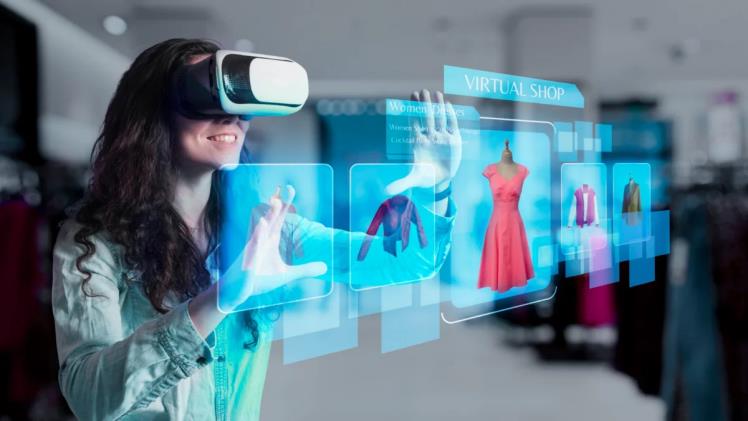The rapid growth of e-commerce over the past decade has revolutionized the way consumers shop. However, a common challenge has always persisted: the inability to see, touch, or try a product before purchasing. This is where Augmented Reality (AR) steps in, bridging the gap between digital and physical shopping experiences. With advancements in AR technology, online retailers are offering more immersive, personalized, and confident shopping journeys than ever before.
What is Augmented Reality?
Augmented Reality is a technology that overlays digital content—like images, animations, or information—onto the real-world environment through devices such as smartphones, tablets, or AR glasses. In the context of online shopping, AR allows customers to visualize products in their actual environment or try them on virtually, enhancing the overall decision-making process.
Key Ways AR is Transforming Online Shopping
1. Virtual Try-Ons for Fashion and Beauty
One of the most popular applications of AR in e-commerce is the virtual try-on. Whether it’s trying on clothes, glasses, or makeup, AR enables consumers to see how items would look on them in real-time using their device camera. This feature has proven especially useful during and after the COVID-19 pandemic, allowing people to shop safely from home.
Examples:
- Warby Parker lets users try on eyeglasses virtually.
- Sephora and L’Oréal offer AR-powered apps for trying different shades of lipstick, eyeliner, and foundation.
2. See-At-Home Furniture and Decor
Buying furniture online can be daunting. Will that sofa fit? Does that coffee table match your room’s style? AR solves this by allowing customers to place a 3D model of the furniture into their space using their smartphone camera.
Examples:
- IKEA Place app allows users to view how different products would look and fit in their actual rooms.
- Wayfair and Amazon offer similar AR-powered features for home décor and furniture.
3. Interactive Product Visualization
Beyond fashion and furniture, AR enables detailed 360-degree views of products. Customers can inspect items like electronics, shoes, or accessories closely, rotate them, and zoom in for intricate details—almost like holding them in their hands.
Example:
- Nike uses AR to allow customers to rotate and explore their shoes before buying.
4. Enhanced Brand Engagement
AR offers creative ways for brands to engage users through interactive storytelling and gamified experiences. For example, brands can create AR filters or games that promote new product launches or allow users to “unlock” special features when scanning certain packaging or QR codes.
Example:
- Pepsi and Coca-Cola have launched AR-enabled campaigns that engage users through playful, branded experiences.
5. Personalized Recommendations
AR, when combined with artificial intelligence, can recommend products based on the user’s preferences and past behavior. Some AR shopping apps can adjust styles, colors, or fits in real time, creating a highly personalized experience.
Benefits of AR in Online Shopping
✅ Improved Customer Confidence
Shoppers are more likely to make a purchase when they can “try before they buy.” AR reduces hesitation and boosts satisfaction by minimizing uncertainty.
✅ Reduced Return Rates
Virtual try-ons and in-space previews help ensure customers make more informed decisions, which leads to fewer returns—a major cost-saving advantage for retailers.
✅ Increased Engagement and Time on Site
Interactive AR experiences keep users on websites and apps longer, increasing the likelihood of a purchase and improving brand loyalty.
✅ Competitive Advantage
Brands that adopt AR are seen as innovative and customer-focused, helping them stand out in a crowded online marketplace.
Challenges and Considerations
While AR offers many benefits, there are also hurdles:
- Cost of Implementation: Developing custom AR apps or integrating AR features into websites can be expensive.
- Device Compatibility: Not all users have access to AR-capable devices.
- User Experience: Poorly designed AR features can frustrate users and harm brand perception.
Retailers must strike a balance between innovation and accessibility, ensuring AR adds value rather than complexity.
The Future of AR in E-Commerce
As AR technology becomes more affordable and advanced, its integration into online shopping will likely become the norm. Future innovations may include:
- AR-powered virtual shopping malls
- Real-time customization of products through AR interfaces
- Wearable AR devices for seamless shopping experiences
E-commerce giants and startups alike are investing in this space, suggesting that AR is not just a novelty but a long-term shift in how we shop online.
Final Thoughts
Augmented Reality is revolutionizing the e-commerce experience by making it more interactive, personalized, and efficient. By allowing consumers to visualize products in their environment or try them on virtually, AR is closing the gap between physical and digital retail. As technology continues to evolve, shoppers can look forward to even more immersive and intelligent shopping journeys—all from the comfort of their homes.
FAQ: How Augmented Reality is Enhancing Online Shopping
Q1: What is Augmented Reality (AR) in online shopping?
A: Augmented Reality in online shopping refers to technology that overlays digital visuals or information onto the real-world environment through a smartphone, tablet, or AR glasses. It allows customers to see how products would look in real life before purchasing.
Q2: How does AR improve the online shopping experience?
A: AR provides a more interactive and immersive experience by enabling users to try on products virtually, visualize furniture or decor in their homes, and inspect items in 3D. This reduces guesswork and increases buyer confidence.
Q3: What types of products benefit most from AR technology?
A: AR is especially useful for fashion (clothes, makeup, eyewear), home décor and furniture, electronics, and footwear—products where visual appearance and fit are important factors in the purchase decision.
Q4: Are there any popular retailers using AR for shopping?
A: Yes, several major retailers use AR, including:
- IKEA Place – lets users see furniture in their rooms.
- Sephora – allows virtual makeup try-ons.
- Warby Parker – enables virtual eyeglass fitting.
- Amazon and Wayfair – offer AR features for home products.
Q5: What devices are required to use AR for shopping?
A: Most AR shopping experiences require a smartphone or tablet with a camera and AR capabilities. Some retailers also offer browser-based AR experiences that don’t require app downloads.
Q6: How does AR help reduce product returns?
A: By allowing shoppers to visualize and try products virtually, AR helps ensure better purchase decisions. This reduces surprises and mismatches, leading to fewer product returns.
Q7: Is AR only available through mobile apps?
A: Not necessarily. While many AR experiences are delivered through mobile apps, some brands have started using WebAR—AR that works directly through a web browser—making it more accessible to users.
Q8: Is AR shopping safe and secure?
A: Yes, AR shopping is generally safe. It uses your device’s camera but does not collect sensitive personal data unless explicitly permitted. Always use AR features from reputable retailers and apps.
Q9: How will AR evolve in online retail?
A: In the future, AR will become more seamless and integrated, potentially including full virtual stores, smart glasses shopping experiences, and real-time customization of products.
Q10: Can small businesses also use AR for their online stores?
A: Yes, with platforms like Shopify and AR service providers offering plug-and-play AR tools, small and mid-sized businesses can now affordably implement AR features in their online shops.







